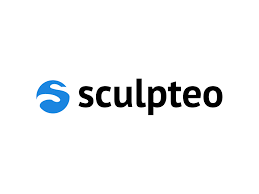
When you are first preparing to upload your design to the Sculpteo website, you can always expect a few things: the design will stay private unless you decide to make it public; you will immediately get a price quote on 3D printing your object; and, finally, Sculpteo will test the object’s printability using its immediate solidity check process. This process checks to see if wall thinness will obstruct a successful print. In the above picture, you can see that the orange and yellow parts of this seflie design are too thin. But if you switch to printing with a different material, you may be able to eliminate those thin areas, and prepare the model for printing. It might be as simple as switching materials.
Your next option is to use Sculpteo’s instant wall thickening tool, which “reforms” your object using a “system of complex geometric algorithms” to determine how to push and pull your object’s walls to its necessary printable state:
“The model is placed into a space where millions of points on an XY&Z plane are documented. An algorithm then determines which point away from the thin area would make the object sufficiently thick for the given material. The algorithm then creates a new mesh around the points, thickening just the areas that need it.”
In order to get the wall thickness right in the selfie design, the arms turned into Popeye arms, rendering the design most likely unprintable since it barely resembles the initial design’s arms (or legs).
Another solution is to increase the print’s overall size until everything turns green (see below photo). In this case, you end up with a larger figurine, but the proportions match the desired proportions of the initial design — making it 3D printable. But this is assuming that you approve of the idea of having a larger sized model that will certainly cost more.
Finally, if you decide you still want to go ahead and print your initial design despite not passing the solidity check, you can email Sculpteo with your registration number at contact@sculpteo.com. They will be able to tell you what to expect if you do this. Some of us take risks in life, and 3D printing is one of them, right?